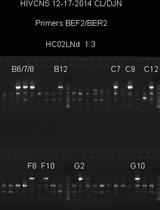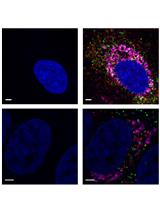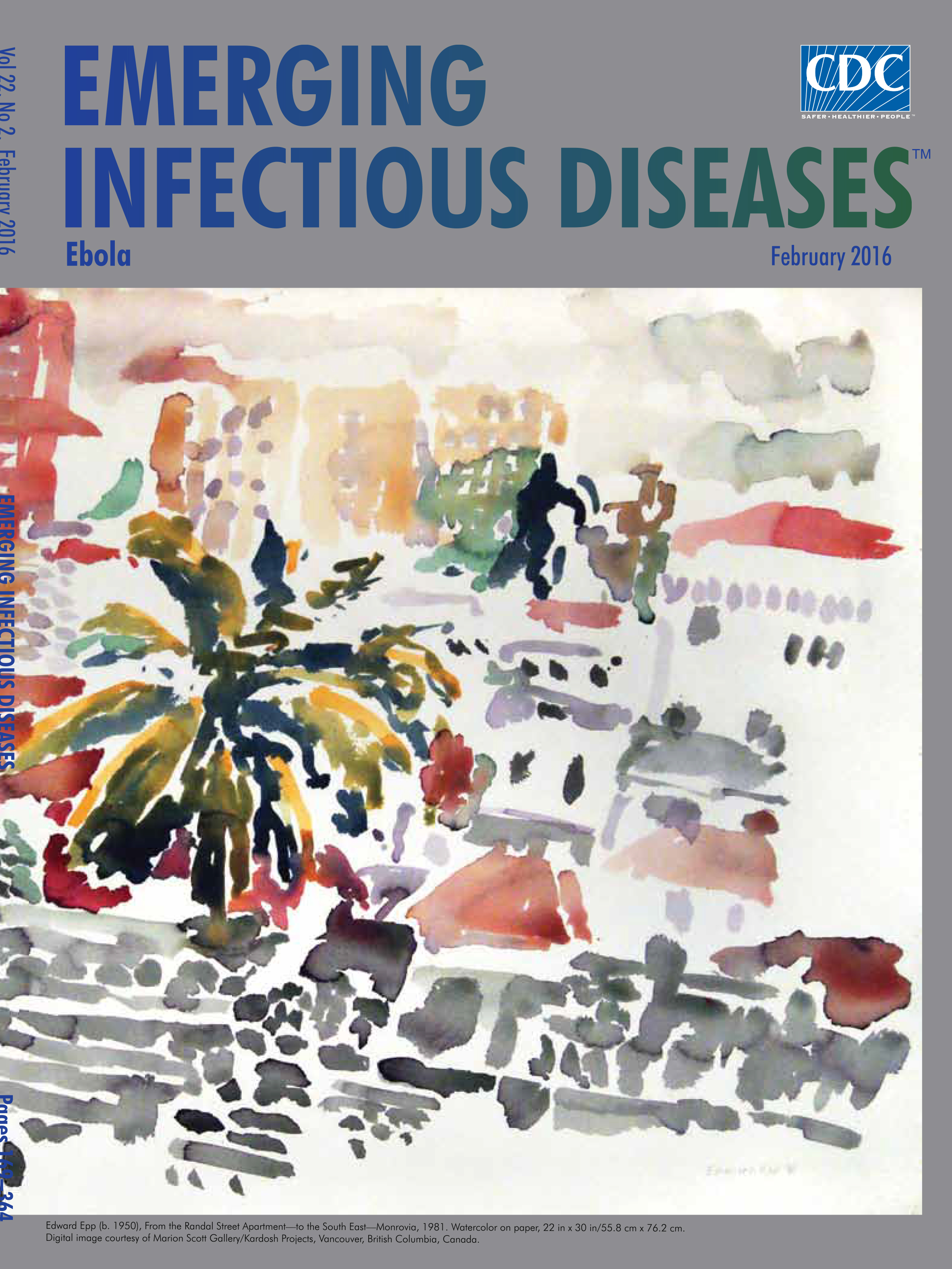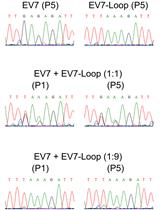- EN - English
- CN - 中文
Sequencing of Ebola Virus Genomes Using Nanopore Technology
采用纳米孔技术对埃博拉病毒测序
发布: 2016年11月05日第6卷第21期 DOI: 10.21769/BioProtoc.1998 浏览次数: 11437
评审: Yannick DebingEmily CopeEmilie Battivelli

相关实验方案

已表达前病毒的HIV-1包膜糖蛋白120 (gp120) 和nef基因的单基因组测序
David J. Nolan [...] Michael S. McGrath
2017年06月20日 9697 阅读

分支DNA FISH技术联合共聚焦显微镜或流式细胞术检测和鉴别多样的病毒RNA
Nicholas van Buuren and Karla Kirkegaard
2018年10月20日 6680 阅读
Abstract
Sequencing of virus genomes during disease outbreaks can provide valuable information for diagnostics, epidemiology, and evaluation of potential countermeasures. However, particularly in remote areas logistical and technical challenges can be significant. Nanopore sequencing provides an alternative to classical Sanger and next-generation sequencing methods, and was successfully used under outbreak conditions (Hoenen et al., 2016; Quick et al., 2016). Here we describe a protocol used for sequencing of Ebola virus under outbreak conditions using Nanopore technology, which we successfully implemented at the CDC/NIH diagnostic laboratory (de Wit et al., 2016) located at the ELWA-3 Ebola virus Treatment Unit in Monrovia, Liberia, during the recent Ebola virus outbreak in West Africa.
Background
Determining the full-length sequence of virus genomes is an essential procedure in virology. While the classical approach to this involved Sanger sequencing following a primer-walking strategy, newer approaches involve the use of next-generation sequencing methods such as 454, Illumina or Ion Torrent technologies. A common problem with all these technologies, despite their many advantages, is that the required instrumentation is large, expensive, fragile, and therefore difficult to transport. Also, library preparation procedures are often involved. While under usual circumstances these issues are of little consequence, as these machines are run in specialized laboratories with excellent infrastructure, during virus outbreaks in remote areas (for example in case of ebolavirus outbreaks) this can pose significant problems, particularly since the export of samples from affected areas to these specialized laboratories is often politically and logistically challenging. Under these circumstances, the availability of a sequencing technology that can be easily and quickly deployed into remote areas, and allows sequencing to be done directly in an outbreak area, can be invaluable. Therefore, we have tested the MinION sequencing device, which at that time was under development by Oxford Nanopore Technologies (ONT), at the field diagnostic laboratory at the ELWA-3 Ebola virus Treatment Unit in Monrovia (de Wit et al., 2016) during the recent Ebola virus outbreak in West Africa, and developed a protocol for the rapid generation of full-length sequences of Ebola viruses under these conditions. This device employs nanopores, through which nucleotide-strands are transported in a controlled fashion. The nucleotides block and thus modulate an ion-current flowing through those pores, depending on the physical properties of the nucleotides passing through the nanopores, and these current modulations are measured by the device and translated into nucleotide sequences. Results of this test, which indicated that this technology indeed shows great promise as a rapidly deployable and highly usable sequencing platform, are available elsewhere (Hoenen et al., 2016), as are the results of a similar test using the same sequencing platform performed independently of our own efforts by Quick et al. (2016).
Materials and Reagents
Note: This protocol was established and tested during the Ebola virus outbreak in West Africa in January 2015, using materials and reagents available at that time. As the development of the MinION platform progresses rapidly, some modifications might be necessary to adopt the protocol to the materials and reagents available now. Particularly, while at the time the technology was only available to members of the MinION access program, it is now commercially available.
- 0.2 ml PCR-tubes (ideally in strips of 8) (e.g., Thermo Fisher Scientific, Thermo ScientificTM, catalog number: AB0490 )
- 1.5 ml tubes (e.g., Thermo Fisher Scientific, Fisher Scientific, catalog number: S348903 )
- Eppendorf protein LoBind tubes, 1.5 ml, PCR clean (Eppendorf, catalog number: 0030108116 )
- Gloves
- MinION flowcell, revision 7.3 (Oxford Nanopore Technologies [ONT])
- RNA freshly purified (or stored at -80 °C) from patient blood samples following appropriate safety protocols
- SuperScript III First-Strand-Synthesis System (Thermo Fisher Scientific, InvitrogenTM, catalog number: 18080051 )
- DEPC-treated nuclease-free water (e.g., Thermo Fisher Scientific, AmbionTM, catalog number: AM9906 )
- Primer, 10 μM (see Table 1 for sequences); primer CGGACACACAAAAAGAAAGAAG at a concentration of 2 μM and 10 μM
- dNTP mix, 10 mM each (e.g., New England Biolabs, catalog number: N0447S )
- iProofTM high-fidelity polymerase (Bio-Rad Laboratories, catalog number: 1725301 )
- Agencourt AMPure XP beads (Beckman Coulter, catalog number: A63881 )
- His-Tag dynabeads (Thermo Fisher Scientific, NovexTM, catalog number: 10103D )
- Magnetic stand for PCR-purification with Agencourt AMPure XP beads in 1.5 ml tubes (e.g., Beckman Coulter, catalog number: A29182 )
- 70% ethanol
- Qiagen elution buffer (QIAGEN, catalog number: 19086 )
- 50x TAE buffer (ideally in 10.2 ml aliquots) (e.g., Thermo Fisher Scientific, Thermo ScientificTM, catalog number: B49 )*
- Agarose (ideally in pre-weighed aliquots of 0.5 g) (e.g., Thermo Fisher Scientific, InvitrogenTM, catalog number: 16500100 )*
- DNA standard (e.g., New England Biolabs, catalog number: N3200S )*
- 6x gel loading dye (e.g., New England Biolabs, catalog number: B7022S )*
- Fast Blast DNA stain (Bio-Rad Laboratories, catalog number: 1660420 )*
- NEBNext dA-tailing module (New England Biolabs, catalog number: E6053S )
- NEBNext end repair module (New England Biolabs, catalog number: E6050S )
- Blunt/TA ligase master mix (New England Biolabs, catalog number: M0367L )
- Genomic DNA Sequencing Kit SQK-MAP004 (ONT): contains DNA CS, 2x wash buffer, elution buffer, EP buffer, HP adapter, Adapter mix and Fuel mix
*Note: Optional materials and reagents.
Equipment
- MinION sequencing device (ONT)
- PCR cycler (e.g., Thermo Fisher Scientific, Applied BiosystemsTM, catalog number: A24811 )
- Vortexer (e.g., Thermo Fisher Scientific, Fisher Scientific, catalog number: S96461A )
- Mini centrifuges for 1.5 and 0.2 ml tubes (e.g., VWR, catalog number: 93000-204 )
- Pipettes: 10 μl, 20 μl, 100 μl, 1,000 μl, 8 x 20 μl multichannel with filter tips (e.g., Mettler-Toledo, catalog numbers: PR-10 , PR-20 , PR-100 , PR-1000 , L8-20XLS+ )
- Racks for 0.2 ml PCR tubes and 1.5 ml tubes (e.g., Thermo Fisher Scientific, Fisher Scientific, catalog numbers: 05-541-85 , 05-541-2 )
- PCR cooler rack, 0.2 ml, 4 °C (e.g., Eppendorf, catalog number: 3881000031 )
- Styrofoam box with lid and cold packs (frozen cold pack at bottom, 4 °C cold pack on top, then sample rack on top of that) as cooler box (or alternatively ice box, when ice is available)
- Electrophoresis chamber with power supply (e.g., Mupid-exU, Takara Clontech)*
- Microwave oven*
- Agarose gel casting stand, or alternatively laboratory tape*
- 250-300 ml glass flask for preparing agarose*
- Box for agarose gel staining*
- Additional infrastructure when sequencing under outbreak conditions
Note: This infrastructure is a given in any Western laboratory, but should be considered when establishing the method under field conditions in outbreak areas. While this topic cannot be exhaustively covered in this protocol, the following points should be carefully considered.- Power generator, uninterruptable power supplies, voltage regulators (all depending on the quality of the electricity supply).
- Air conditioning if possible, alternatively external heatsink (e.g., a ~30 x 30 cm metal plate) for MinION sequencing device.
- Clean water for preparation of 1x TAE, and for DNA staining and destaining - bottled drinking water (ideally in 500 ml bottles) can be used for this purpose if no other source of clean water is available.
- Equipment for safe sample inactivation and RNA extraction.
- 4 °C fridge, -20 °C freezer, optionally -80 °C freezer for storage of RNA.
- Personal protective equipment as deemed necessary.
- Power generator, uninterruptable power supplies, voltage regulators (all depending on the quality of the electricity supply).
Software
- Laptop running MinKNOW software v 0.48.2.12 (ONT) with internet connection (e.g., via 3G wireless router); for current IT requirements please check the ONT internet site (https://nanoporetech.com/community/faqs).
Procedure
文章信息
版权信息
© 2016 The Authors; exclusive licensee Bio-protocol LLC.
如何引用
Hoenen, T. (2016). Sequencing of Ebola Virus Genomes Using Nanopore Technology. Bio-protocol 6(21): e1998. DOI: 10.21769/BioProtoc.1998.
分类
微生物学 > 微生物遗传学 > RNA
分子生物学 > RNA > RNA 测序
系统生物学 > 基因组学 > 测序
您对这篇实验方法有问题吗?
在此处发布您的问题,我们将邀请本文作者来回答。同时,我们会将您的问题发布到Bio-protocol Exchange,以便寻求社区成员的帮助。
提问指南
+ 问题描述
写下详细的问题描述,包括所有有助于他人回答您问题的信息(例如实验过程、条件和相关图像等)。
Share
Bluesky
X
Copy link










